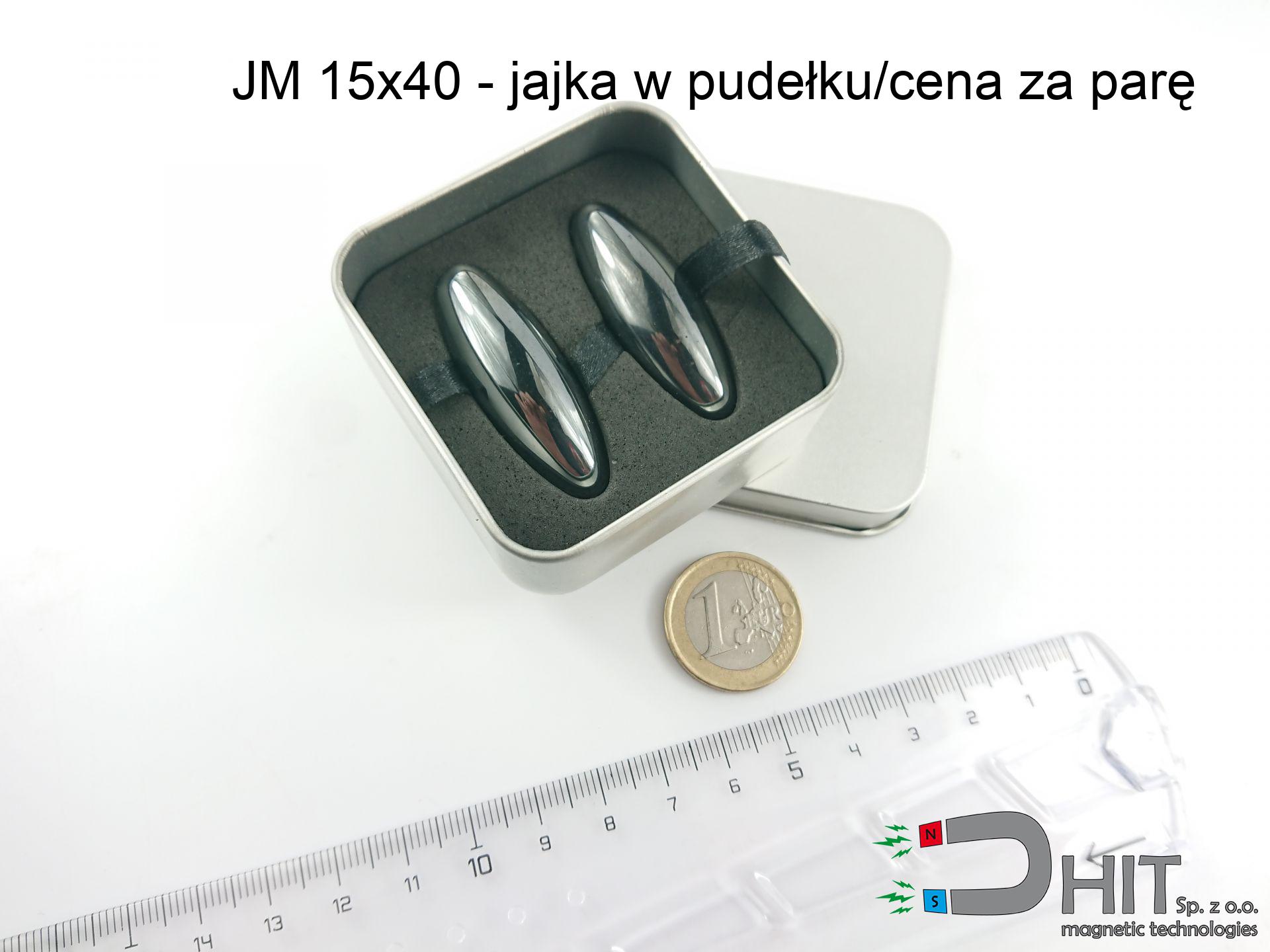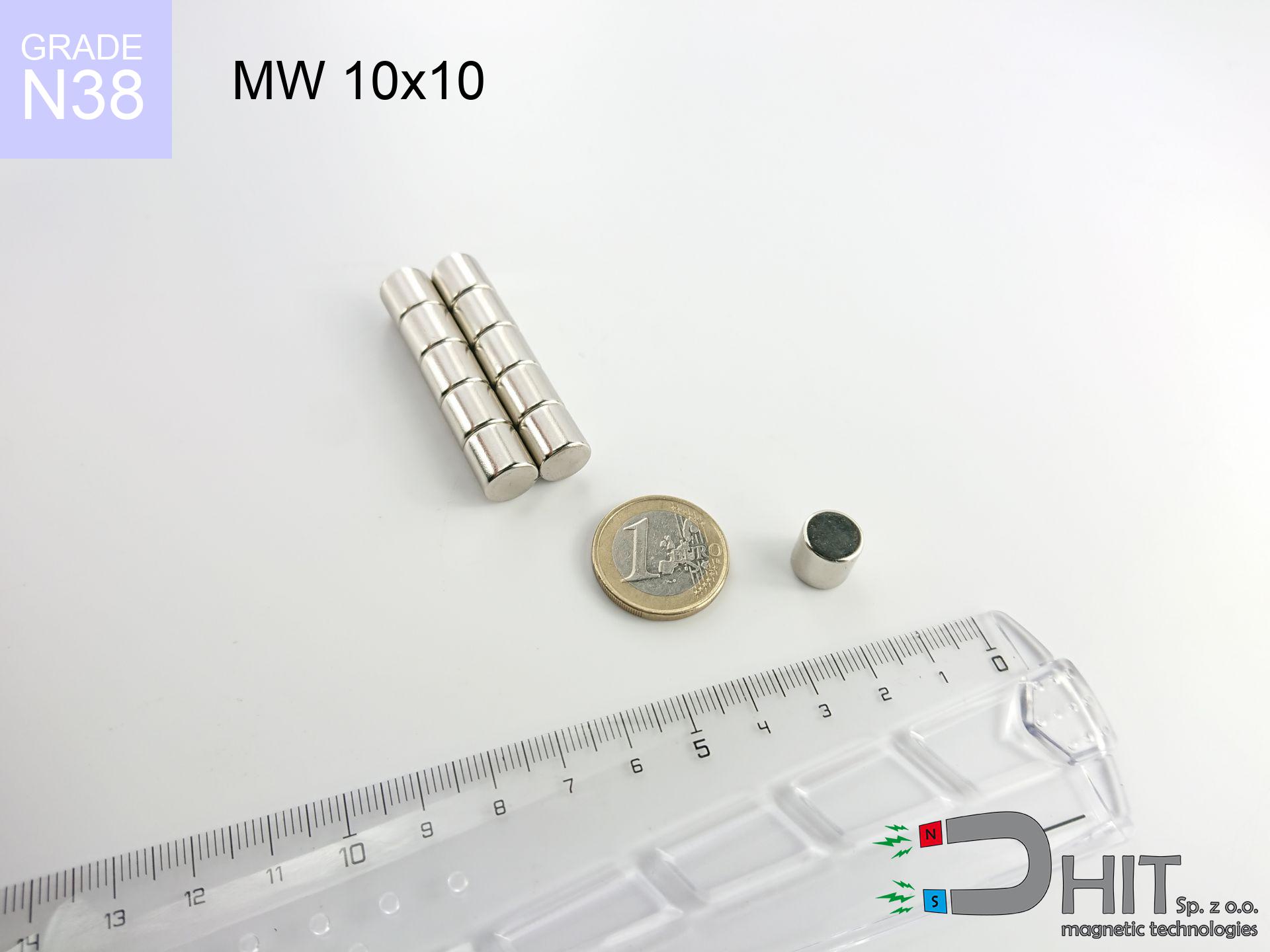JM 15x40 - jajka w pudełku/cena za parę - magnetic eggs
magnetic eggs
Catalog no 270212
GTIN/EAN: 5906301814405
Weight
77 g
7.00 ZŁ with VAT / pcs + price for transport
5.69 ZŁ net + 23% VAT / pcs
bulk discounts:
Need more?
Call us
+48 888 99 98 98
alternatively let us know via
contact form
our website.
Lifting power as well as appearance of a neodymium magnet can be reviewed using our
magnetic calculator.
Same-day shipping for orders placed before 14:00.
Technical details - JM 15x40 - jajka w pudełku/cena za parę - magnetic eggs
Specification / characteristics - JM 15x40 - jajka w pudełku/cena za parę - magnetic eggs
| properties | values |
|---|---|
| Cat. no. | 270212 |
| GTIN/EAN | 5906301814405 |
| Production/Distribution | Dhit sp. z o.o. |
| Country of origin | Poland / China / Germany |
| Customs code | 85059029 |
| Weight | 77 g |
| Manufacturing Tolerance | ±1 mm |
Physical properties of sintered neodymium magnets Nd2Fe14B at 20°C
| properties | values | units |
|---|---|---|
| Vickers hardness | ≥550 | Hv |
| Density | ≥7.4 | g/cm3 |
| Curie Temperature TC | 312 - 380 | °C |
| Curie Temperature TF | 593 - 716 | °F |
| Specific resistance | 150 | μΩ⋅cm |
| Bending strength | 250 | MPa |
| Compressive strength | 1000~1100 | MPa |
| Thermal expansion parallel (∥) to orientation (M) | (3-4) x 10-6 | °C-1 |
| Thermal expansion perpendicular (⊥) to orientation (M) | -(1-3) x 10-6 | °C-1 |
| Young's modulus | 1.7 x 104 | kg/mm² |
Elemental analysis
| iron (Fe) | 64% – 68% |
| neodymium (Nd) | 29% – 32% |
| boron (B) | 1.1% – 1.2% |
| dysprosium (Dy) | 0.5% – 2.0% |
| coating (Ni-Cu-Ni) | < 0.05% |
Ecology and recycling (GPSR)
| recyclability (EoL) | 100% |
| recycled raw materials | ~10% (pre-cons) |
| carbon footprint | low / zredukowany |
| waste code (EWC) | 16 02 16 |
Other offers
Strengths as well as weaknesses of neodymium magnets.
Strengths
- They retain full power for nearly 10 years – the loss is just ~1% (according to analyses),
- Neodymium magnets remain highly resistant to magnetic field loss caused by external field sources,
- In other words, due to the shiny surface of nickel, the element becomes visually attractive,
- They show high magnetic induction at the operating surface, making them more effective,
- Made from properly selected components, these magnets show impressive resistance to high heat, enabling them to function (depending on their shape) at temperatures up to 230°C and above...
- Thanks to freedom in shaping and the ability to customize to client solutions,
- Huge importance in innovative solutions – they are commonly used in computer drives, brushless drives, medical equipment, also industrial machines.
- Relatively small size with high pulling force – neodymium magnets offer impressive pulling force in compact dimensions, which makes them useful in miniature devices
Cons
- At very strong impacts they can break, therefore we recommend placing them in steel cases. A metal housing provides additional protection against damage, as well as increases the magnet's durability.
- Neodymium magnets lose strength when exposed to high temperatures. After reaching 80°C, many of them experience permanent drop of power (a factor is the shape and dimensions of the magnet). We offer magnets specially adapted to work at temperatures up to 230°C marked [AH], which are very resistant to heat
- When exposed to humidity, magnets start to rust. For applications outside, it is recommended to use protective magnets, such as magnets in rubber or plastics, which secure oxidation and corrosion.
- Limited possibility of making nuts in the magnet and complex shapes - preferred is casing - mounting mechanism.
- Possible danger related to microscopic parts of magnets pose a threat, in case of ingestion, which gains importance in the aspect of protecting the youngest. It is also worth noting that tiny parts of these devices are able to disrupt the diagnostic process medical when they are in the body.
- High unit price – neodymium magnets are more expensive than other types of magnets (e.g. ferrite), which can limit application in large quantities
Holding force characteristics
Breakaway strength of the magnet in ideal conditions – what it depends on?
- using a plate made of low-carbon steel, serving as a ideal flux conductor
- with a thickness minimum 10 mm
- with a surface free of scratches
- without any air gap between the magnet and steel
- under perpendicular force vector (90-degree angle)
- in stable room temperature
Lifting capacity in real conditions – factors
- Space between magnet and steel – even a fraction of a millimeter of separation (caused e.g. by varnish or dirt) drastically reduces the magnet efficiency, often by half at just 0.5 mm.
- Load vector – maximum parameter is obtained only during pulling at a 90° angle. The force required to slide of the magnet along the surface is usually many times smaller (approx. 1/5 of the lifting capacity).
- Element thickness – for full efficiency, the steel must be sufficiently thick. Paper-thin metal restricts the attraction force (the magnet "punches through" it).
- Chemical composition of the base – low-carbon steel gives the best results. Higher carbon content decrease magnetic permeability and holding force.
- Surface structure – the more even the surface, the better the adhesion and higher the lifting capacity. Unevenness acts like micro-gaps.
- Thermal factor – hot environment reduces pulling force. Exceeding the limit temperature can permanently damage the magnet.
Lifting capacity was measured with the use of a steel plate with a smooth surface of suitable thickness (min. 20 mm), under perpendicular pulling force, in contrast under parallel forces the lifting capacity is smaller. In addition, even a minimal clearance between the magnet and the plate decreases the lifting capacity.
H&S for magnets
Danger to the youngest
Only for adults. Small elements pose a choking risk, leading to serious injuries. Store out of reach of children and animals.
Dust explosion hazard
Mechanical processing of NdFeB material carries a risk of fire risk. Neodymium dust oxidizes rapidly with oxygen and is difficult to extinguish.
Allergy Warning
Studies show that nickel (the usual finish) is a strong allergen. If your skin reacts to metals, prevent direct skin contact and opt for encased magnets.
Handling guide
Before use, check safety instructions. Sudden snapping can break the magnet or hurt your hand. Be predictive.
Phone sensors
Remember: rare earth magnets produce a field that disrupts sensitive sensors. Keep a safe distance from your mobile, tablet, and GPS.
Safe distance
Equipment safety: Strong magnets can ruin payment cards and delicate electronics (pacemakers, medical aids, timepieces).
Demagnetization risk
Control the heat. Exposing the magnet above 80 degrees Celsius will ruin its properties and strength.
Pinching danger
Big blocks can crush fingers instantly. Do not put your hand between two attracting surfaces.
Protective goggles
Despite metallic appearance, neodymium is delicate and not impact-resistant. Avoid impacts, as the magnet may shatter into hazardous fragments.
Pacemakers
People with a pacemaker have to keep an large gap from magnets. The magnetic field can disrupt the operation of the life-saving device.








